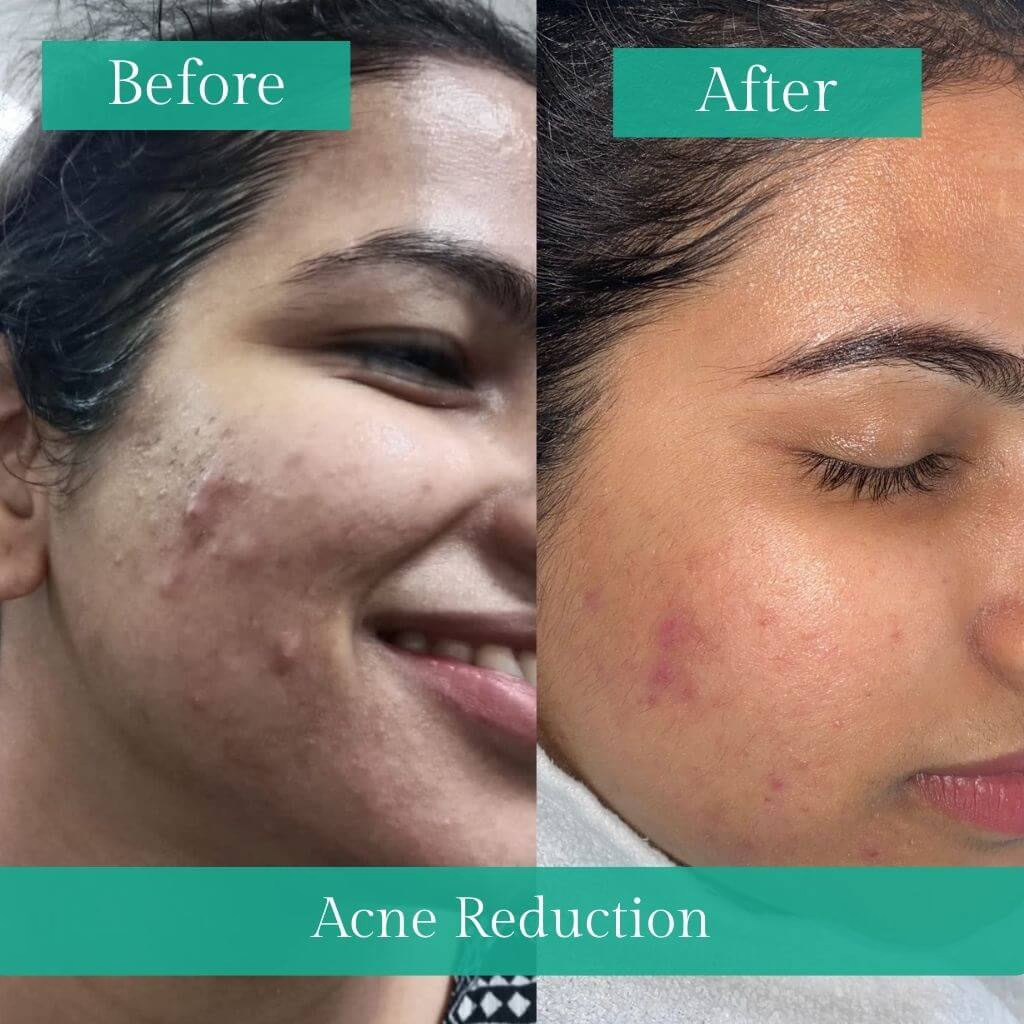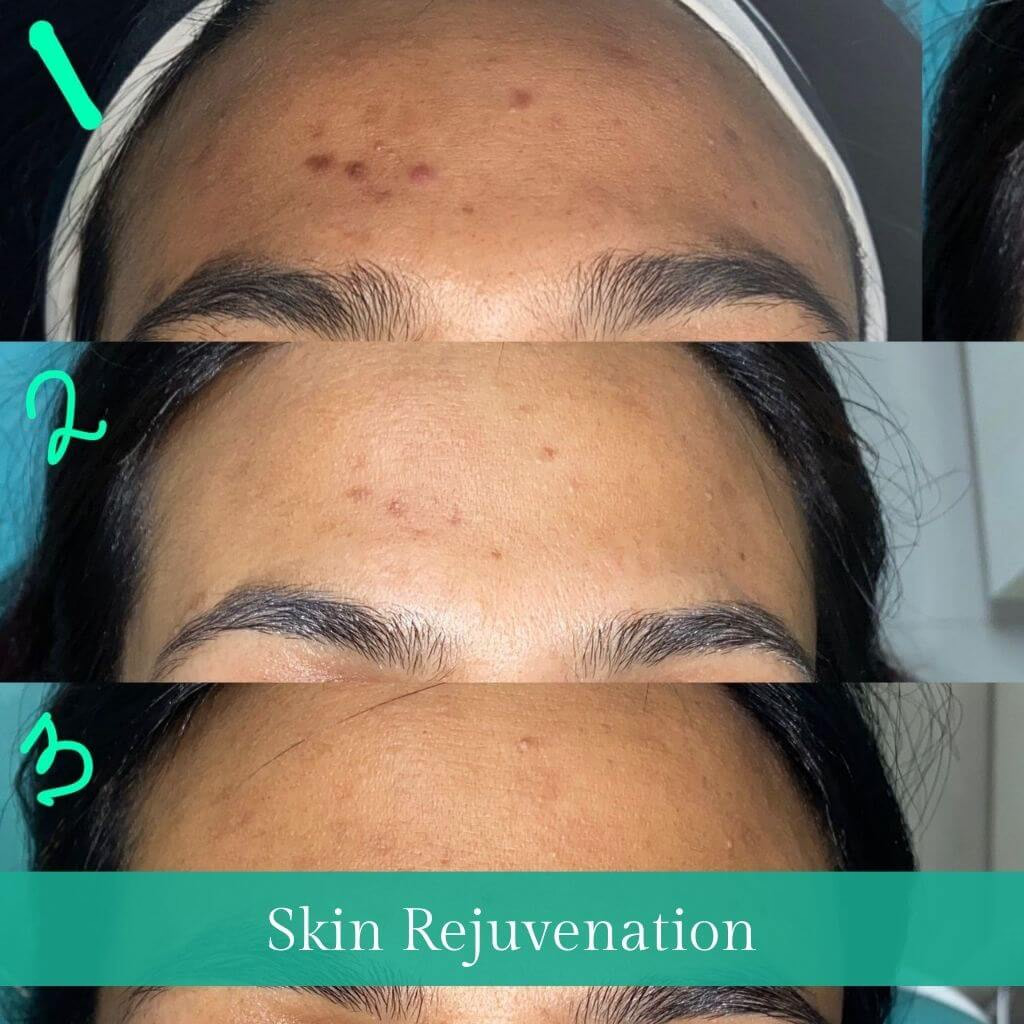What is a chemical peeling process for the face?
Chemical peels or chemoexfoliation or dermapeeling for the face are a procedure in which a solution (peeling agent) is applied onto the face to soften and remove the outer dead layers of the skin. It is done for skin rejuvenation and treatment of many skin conditions.
What problems can be treated with chemical peels?
- The use of chemical peels can remove dead skin cells, resulting in smoother and revitalized skin.
- They can reduce the incidence of acne, milia and black-heads & white-heads.
- Certain chemical peels have a depigmenting effect and lighten spots on the face.
- Chemical peels also help resurface skin and reduce fine lines on the face.
- Peeling is helpful in the reduction or lightening of acne scars and marks, giving the skin a more homogenous and healthy appearance.
- Deeper peels can help in re-texturing the skin to appear smoother and brighter.
- Peels help with gradual tanning reduction.
- Peels are effective in managing uneven skin tone.
What is the post-peel care I need to do for my face?
After a chemical peel, the skin on your face is sensitive as the outer dead cell layer is removed. Thus, it is important not to apply harsh chemicals or make-up in the initial period.
Use a skin regime as your doctor advises- it may include a gentle face cleanser, some serums with active ingredients, moisturizer depending on your skin's needs and sunscreen.
Minimize your sun exposure for the initial period following a chemical peel procedure. Minimum SPF 50 is advisable after a chemical peel procedure has been done, as skin is sensitive to the sun after treatment.
Depending on the peel's intensity and category, Your doctor might provide tailored instructions to optimize the treatment outcome.
What can be the side effects of chemical peels?
Initial side effects may include redness or burning sensation. Superficial peels usually have zero to negligible downtime, but deeper peels may cause some post-procedure discomfort.
Post-inflammatory hyperpigmentation is another side effect that may happen in case of inability to follow post-operative care and instructions.Some peels may lead to outbreaks of herpes virus infections or cold sores in people with a history of herpes.
Is a chemical peeling Painful?
Chemical peels are of various types. The superficial peels are usually painless and may cause mild tingling during the process. Your doctor will observe the changes and reactions of your skin to ensure you are comfortable throughout the procedure.
Will my skin peel off after getting a chemical peel?
Not all peels lead to the peeling of the skin. Certain peels, like retinol-based yellow peels, can lead to shedding out the outer dead cell layer of the skin. This process typically starts 2-4 days after the peel and lasts for 3-5 days.
During the peeling, your doctor will advise you to keep the skin well hydrated and moisturized and not manually peel off the skin with your hands or nails, as that may lead to scarring.
Can you see results after one peel?
One chemical peeling session will exhibit some improvement in the skin, like improving skin texture and tone and reducing dullness and tan. Still, deeper issues such as post-acne scars, wrinkles, and deep sun damage will need more sessions to achieve the desired results.
Which chemical peel is best?
Different chemical peels are used for managing different skin problems and conditions. Glycolic peels are used to improve skin tone and lighten pigmentation, Salicylic and mandelic peels help with acne reduction, Vitamin C peels help with brightening, Retinol yellow peels help with skin rejuvenation, and Lactic acid peels benefit dry and sensitive skin.
Your doctor will analyze your skin and make the decision for the best peel for your situation.
How many chemical peels can I go for per month?
The turnover time for skin cells, on average, is 3-4 weeks. Thus, getting a chemical peel session once per month is safe. The results will build up gradually with each sitting. After the prescribed protocol, you can opt for sessions at a more delayed frequency in consultation with your doctor to maintain the achieved outcome.
Is a chemical peeling Painful?
Chemical peels are of various types. The superficial peels are usually painless and may cause mild tingling during the process. Your doctor will observe the changes and reactions of your skin to ensure you are comfortable throughout the procedure.
Will my skin peel off after getting a chemical peel?
Not all peels lead to the peeling of the skin. Certain peels, like retinol-based yellow peels, can lead to shedding out the outer dead cell layer of the skin. This process typically starts 2-4 days after the peel and lasts for 3-5 days.
During the peeling, your doctor will advise you to keep the skin well hydrated and moisturized and not manually peel off the skin with your hands or nails, as that may lead to scarring.
Can you see results after one peel?
One chemical peeling session will exhibit some improvement in the skin, like improving skin texture and tone and reducing dullness and tan. Still, deeper issues such as post-acne scars, wrinkles, and deep sun damage will need more sessions to achieve the desired results.
Which chemical peel is best?
Different chemical peels are used for managing different skin problems and conditions. Glycolic peels are used to improve skin tone and lighten pigmentation, Salicylic and mandelic peels help with acne reduction, Vitamin C peels help with brightening, Retinol yellow peels help with skin rejuvenation, and Lactic acid peels benefit dry and sensitive skin.
Your doctor will analyze your skin and make the decision for the best peel for your situation.
How many chemical peels can I go for per month?
The turnover time for skin cells, on average, is 3-4 weeks. Thus, getting a chemical peel session once per month is safe. The results will build up gradually with each sitting. After the prescribed protocol, you can opt for sessions at a more delayed frequency in consultation with your doctor to maintain the achieved outcome.






